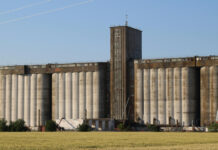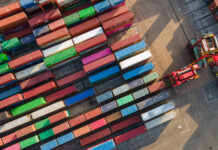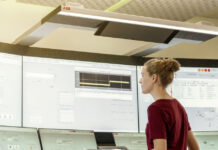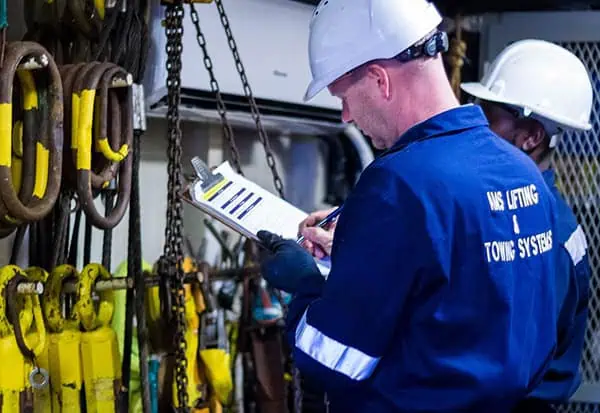By Diane Silcock
AMS Lifting & Towing Systems (AMS), a Namibian company based in Walvis Bay and Luderitz, and provider of services and supplies to the local and international oil and gas, general marine and mining industries, is proactively gearing up its operation to take advantage of the anticipated offshore oil and gas development in the region.
The company has moved to larger premises with extensive overhead gantries, and has invested heavily in equipment. This includes: large hydraulic 600t and 1 000t presses for sling manufacture; wire rope spooling equipment that enables it to take 60 tonne wire rope coils on and off of vessels and rigs; and Magnetic Resonance Testing (MRT) machines which use strong magnetic fields to detect internal defects in wire rope. Added to this has been the upskilling of staff to internationally-certified technicians and inspectors.
AMS director Robert Whitehead says, “As members of the internationally-recognised Lifting Equipment & Towing Systems Association (LEEA), we have invested significant amounts into training and certifying staff with LEEA qualifications, which enables us to undertake independent third-party inspections of lifting equipment and offshore containers. We can now provide these services to offshore international operators that were not previously available in South Africa or Namibia.”
“We do a lot of inspections,” says Whitehead. “Companies call us in to conduct routine inspection of their lifting slings, for instance. They might have 200 slings to be inspected which will require us to spend a couple of days checking them, as every sling has to be properly marked and matched to a certificate.
“Everything that goes onto an oil rig offshore, goes on to an offshore container, which is half the size of a 20ft container (a mini container) and those also require certification. Not only the container, but the bridle that’s required to lift it onto the rig and onto the rig tender. That also needs certification and needs to be done regularly.”
Inspecting steel wire ropes has become a lot more sophisticated with the INTRON MRT machines. AMS runs the new steel wire through the machine which builds an internal structural profile of the complete length of the wire – which could be 2 000 metres. This is stored on computer and at various stages in the life of the wire, it can be run through the machine again, to compare it to its original status visually. The graphic representation shows if there are broken wires, corrosion, compression or any deviation. Moreover, with the machine being portable, AMS can go on board the vessels to do the inspections.
“Having undergone training by INTRON, we are skilled with calibration and occasionally are requested by customers to calibrate their machines that cater for wire up to 150mm in diameter,” says Whitehead.
AMS manufactures to the northern European DNV standard – the highest international standard for the offshore industry which sets standards for ships and offshore structures. With a DNV 9001 quality control system in place, the company’s DNV 2.71 and 2.73 certifications allow it to manufacture equipment that complies with the DNV standard.
Currently, AMS is the only DNV-certified rigging outfit in Namibia.
All offshore lifting equipment is required to be certified, with traceability back to the original equipment manufacturer, and is required to be inspected on a regular basis within 6 months or 12 months, depending on the product.
AMS Lifting & Towing Systems’ proactive approach is commendable in preparing the company and staff for the much-anticipated Namibian oil and gas boom.















